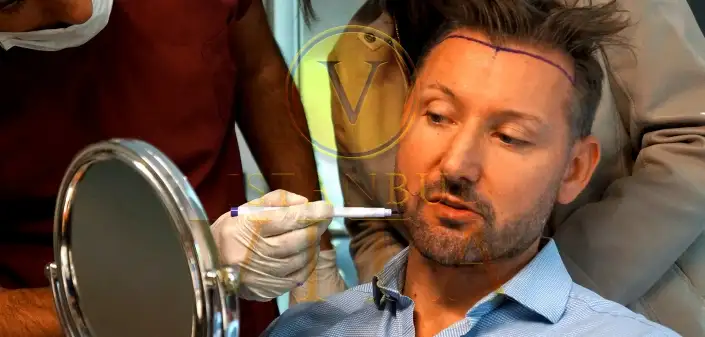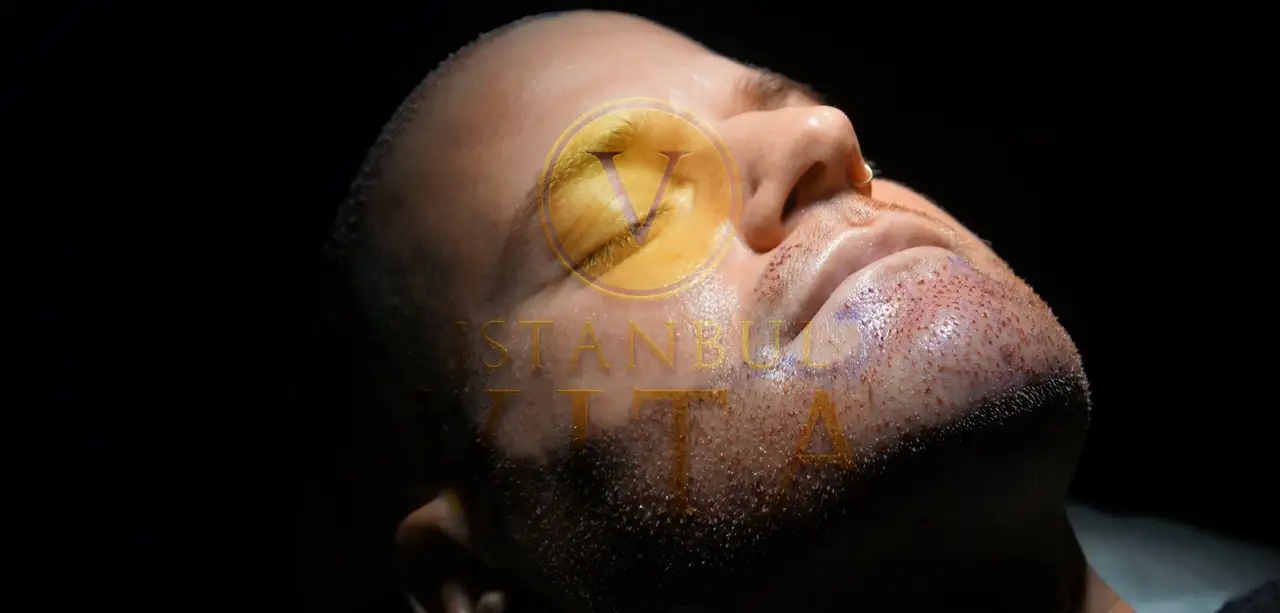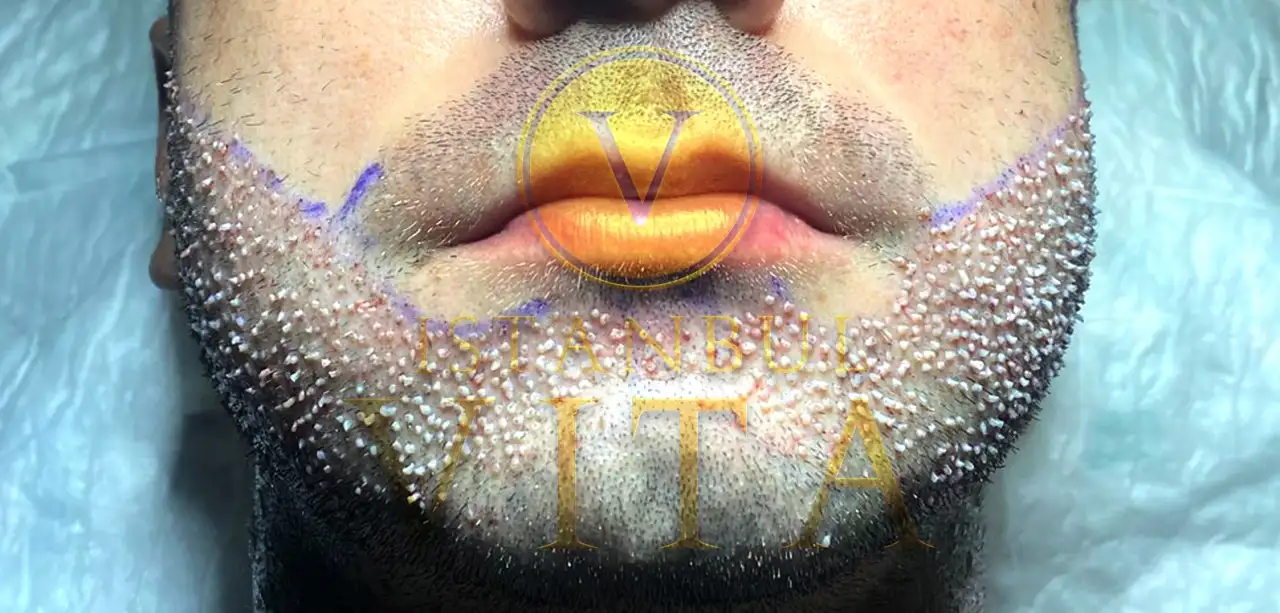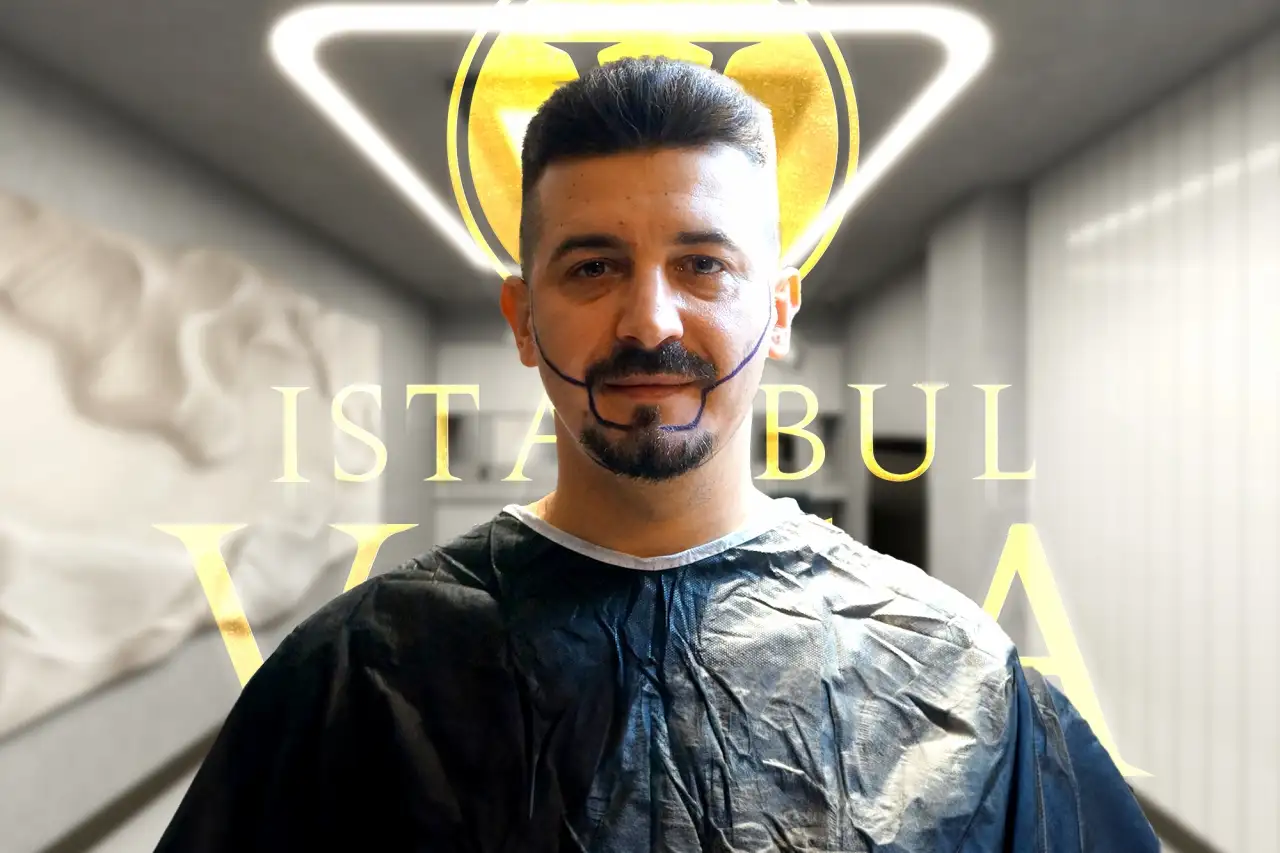
What are the beard and mustache transplant techniques and the cost in 2024?
Although hair transplant procedures are generally popular on the part of men, beard and mustache transplant procedures also attract the attention of many men. In men, hair loss is observed in the hair and mustache area over time due to both age factor and genetic and environmental factors. As with hair transplants, beard, and mustache transplant, procedures are also permanent. These permanent procedures make men feel better mentally and more self-confident.
The donor area is taken from the area from the back of the ear to the nape of the head in beard and mustache transplant, as in hair transplant. The grafts taken from the donor area are transferred to the recipient area covered by the shedding. 2500 hair follicles will be sufficient for mustache and beard transplant.
Mustache Transplant and Beard Transplant
Local anesthesia is applied to the patient in order not to feel pain and pain in the beard and mustache transplant operation. Hair follicles are transferred to the recipient area one by one. The duration of the hair process varies according to the width of the area to be transplanted and the number of grafts to be transplanted, it takes an average of 5-6 hours. The number of grafts varies from person to person. Beard and mustache transplant operation will start to give results at the end of 3 months.
What are the Effects of Mustache and Beard Transplant?
Beards and mustaches have become an indispensable part of their style for some men. Encountering problems such as not being able to shape as they want or shedding causes low self-confidence in people. With the developing technology, progress has been made in mustache and beard transplants as well as in hair transplants.
- A natural image is provided. The transplanted area will turn into a denser and more permanent appearance.
- Compared to hair procedures, beard and mustache transplant procedures take place in a shorter time, and the level of pain is lower.
- Compared to hair transplant, patients who have hair and mustache transplants adapt to their social life faster because hair and beard transplant is a simpler operation.
- There is a noticeable difference between the old and new appearance of the patient.
Techniques Used in Beard and Moustache Transplant
First, the specialist doctor examines the density and structure of the beard and mustache. After analyzing beard and mustache transplants, it determines the number of grafts to be according to its analysis. It is important in which direction the hair follicles grow, as in the beard transplant process, the structure of the hair follicles should be examined for a natural and aesthetic appearance in the mustache transplant process.
The specialist doctor requests a blood test from the patient before the beard and mustache transplant procedure. The results of the blood test examine whether the patient has any ailments and the risk of infectious diseases that will affect the treatment. According to the results of the analysis, surgical procedures are decided. Beard Transplant Turkey offers you both techniques.
DHI Transplant Technique
Beard mustache transplants can be done using the DHI hair technique. In the DHI transplant technique, first of all, the width of the area where the beard transplant will be performed is determined in the presence of a specialist doctor, and the number of grafts is calculated according to this area. Local anesthesia is given to the patient so that he does not feel pain and pain during the operation. The most important feature that distinguishes the DHI hair technique from other techniques is the use of a CHOI pen during the operation. The CHOI pen transfers the graft area to the area to be transplanted simultaneously. The use of state-of-the-art devices will reduce tissue damage after the operation and keep surgical scars to a minimum. A more natural appearance is provided.
Sapphire FUE Transplant Technique
The Sapphire FUE technique has been one of the most preferred transplant methods in recent years. Thanks to this transplant technique, beard and mustache transplants are also performed. Sapphire-tipped blades are used in Sapphire FUE transplant operations with the developing technology. As in other techniques, in the Sapphire Fue technique, the hair follicles are first examined in the presence of a specialist doctor. Depending on the width of the recipient area, the required amount of grafts is. Local anesthesia is given to the patient before starting the beard and mustache transplant process so that the patient does not suffer from pain and pain. In this way, the patient will get through the mustache and beard transplant process more lightly.
A channel is opened in the recipient area with a Sapphire knife. Grafts are placed in this opened channel. The Sapphire blade provides less tissue loss after the surgical procedure and a natural appearance is obtained by making micro scratches.
PRP Treatment
Blood taken from the patient's body is injected into the tissue of the person to be treated by going through different processes. Thanks to Beard Transplant Turkey, you can achieve the look you want with the PRP technique. If you want to get information about PRP plasma therapy, you can take a look at our article.
Beard Transplant Operation and After

The redness that occurs after the beard transplant process occurs due to the edema of the needles used during the application. Redness may also occur in the areas where the hair follicles are taken. These rashes are not permanent. Sensitivity may also occur in the area and the area where the transplant is performed. It is a natural part of the beard transplant process. These sensitivities will disappear within an average of 1-2 weeks. If you follow the instructions given by your doctor, you will healthily complete your healing process.
The first 2 weeks are the most important phase of beard and mustache transplant. You should avoid contact with the beard and mustache area. Patients can involuntarily touch their faces, you should not touch the operated area to avoid infection.
- The way you lie down is important, the area where the operation takes place should be protected.
- You should stay away from sunlight. Sunlight can cause spots on the face and also damage the operated area.
- Stay away from activities that will cause you to sweat.
- Do not lift weights, you should stay away from activities that will tire you physically. If you play sports, you need to take a break.
- You need to stop the consumption of alcohol and cigarettes. Alcohol and smoking will prolong your healing process.
- Do not use products other than the care products recommended by your doctor. Keep your face away from chemical products, especially for 1-2 weeks. If chemical products come into contact with your face, they can cause you to get an infection and cause inflammation in your beard area. If you encounter any possible reactions, you should arrange a meeting with your doctor.
Beard–Mustache Transplant Process and Shock Loss Phase
Although beard and mustache procedures vary according to the operation; Mustache transplant takes an average of 2 to 4 hours. Beard procedures take between 3 and 7 hours. The length of the procedure varies according to the number of grafts. Intense shedding is observed 14 days after mustache or beard transplant. The shock-shedding phase is a natural part of the process. After the shock-shedding phase, the hairs begin to grow again in the 3rd month. You should not neglect the care after the beard transplant process.
Care after beard transplant is one of the stages to be considered. It will be safer for the first wash to be done by the doctor after the beard transplant process, but if you do not go to your clinic, you can perform the washing process by following the instructions given by your doctor. If you want to get information about beard and mustache transplant care, you can check out our article.
- If you want to complete the healing phase healthily, use the lotions recommended by your doctor.
- When applying the washing process, pressure should not be applied to the transplanted area. You should do your washing process with gentle movements, the grafts should not be damaged. While the patient is washing at home, he may encounter crusting in the area of the planting area, it is not a situation to be afraid of.
- After beard and mustache transplant, you should wait 10 days to shave, then shaving can be done under the supervision and instructions of a doctor.
- After beard and mustache transplant, new hair follicles begin to grow after the 3rd month, but it is necessary to wait an average of 6 and 12 months to achieve the desired appearance.
Beard Serum Usage

Apart from the drugs taken internally to nourish the hair follicles, external reinforcement is also required to strengthen the beard and mustache roots. Shaving your beard and mustache every day will irritate the hair follicles and skin. Beard and mustache roots need to be moisturized. For this reason, you should use serums that will nourish your skin, beard, and mustache.
Beard Serum and Its Effects
By using a beard serum suitable for your skin, you can accelerate your blood flow, so your beard and mustache will grow fuller. If you use serum regularly, your hair structure will be thicker, and the sparse appearance of your beard will be covered. Such anti-shedding serums that strengthen hair follicles should be used in a certain order. You should create a grooming routine for yourself. Serum therapy should be used for at least 2 months. Serum may give negative results in genetic shedding. You should talk to your specialist doctor and plan your treatment process.
Types of Serums
Panthenol: It contains vitamin B5. When you apply Panthenol serum to your skin, it goes deep into your skin and moisturizes your beard. You can also apply it to your hair. It adds a more voluminous and fuller appearance to your hair.
Grape Seed Oil: When you shave your beard regularly, your skin may dry out. You can moisturize it with grape seed oil to relieve dryness on your skin.
Argan Oil: It contains vitamin E. It creates an elastic effect on the skin. Prevents wrinkles. If you use it in hair, beard, and mustache care, you will get a fuller and brighter appearance.
Beard Mustache Transplant Turkey and Health Tourism
Turkey has proven its success worldwide by gaining great momentum in health tourism recently and attracting tourists from all over the world. Tourists entering Turkey both take their holidays and have beard transplant procedures. Tourists, who are very pleased with the beard transplant procedures in Turkey, also refer to their surroundings and ensure that the transplant centers are heard around the world. In particular, Istanbul is one of the most preferred locations in terms of technology quality, and satisfaction compared to other provinces.
Istanbul Vita and Beard Mustache Transplant Procedures
Istanbul Vita is one of the most talked about clinics recently with the health services it has been providing for 15 years. In addition to hair transplant services, Istanbul Vita also provides services for beard and mustache transplants, and beard transplant is very popular with patients. For beard transplant procedures, as in other procedures, they work with specialist doctors and experienced teams. Istanbul Vita uses the latest technological products in beard transplant processes. Operations are carried out in hygienic environments, providing a sterile environment is extremely important for patient health.
Beard Transplant Procedures and Risks That May Occur
In hair, eyebrow, beard, and mustache transplants, negative results may be encountered in some possible cases. The negative reactions that occur are temporary. After transplant, numbness, bruising, or redness may occur, and at the same time, scars can be seen in the face area with the effect of the operation, there is a possibility of infection, but all of the factors we have mentioned will lose their effect in a short time. Before the beard and mustache transplant procedure, you will be informed about the reactions by your specialist doctor.
Factors That Cause Beard – Mustache Loss

There is more than one cause of hair and mustache loss. Some of these may be due to genetic and environmental factors, chronic diseases, age range, stressful life, and unhealthy-irregular eating habits.
Genetic Factors
Like eye color, height, hairstyle color, and other characteristics encoded by our DNA, mustache and beard density are also transmitted through DNA. While beard and mustache density is high in some men, beard and mustache density is rarely observed in some men due to genetic factors.
Male Hormone
Male hormones are a major factor in hair formation. The density of hair, beard, mustache, eyebrows, and other hairs is directly proportional to the level of secretion of male hormones. The hormone testosterone affects the formation of hair in the body. The more the testosterone hormone is secreted; There is an increase in the number of hairs on the body in this direction. Hairs grow more often. The cut hairs will be restored in a short time. Beards and mustaches are stronger. If there is not enough hair growing in the face area, this is due to a low level of secretion of hormones. If sufficient blood flow is not provided to the facial area, the hair follicles become weak and the beard and mustache grow messy. You should also talk to your doctor about hormone therapy in the presence of specialist doctors. You can have your blood values checked and your hormone values measured.
Lifestyle & Health
A healthy lifestyle improves the quality of life. Providing a sleep pattern will positively affect your body's rest. One of the most important effects of regular life is to create a sleep pattern.
You should create a diet if you meet your nutritional needs without skipping meals; Thanks to the nutritional values you take, it will allow you to lead a healthy life. Since foods such as fast food and junk food do not contain nutritional value, they will negatively affect your hormones. You need to get values such as minerals, vitamins, carbohydrates, and proteins from the foods you consume and do not forget to drink water. Water also has many important things for your internal organs. If you continue to eat unhealthy, you may encounter hair and beard loss problems.
Playing sports will activate your muscles. The fact that your body is in motion will cause your hormones to work healthily. Make sure to move during the day. Hiking, and engaging in various sports activities will stimulate you.
Environmental Factors
The stuffy environment you are in, working in an environment with chemical products, dressing in such a way that your hair follicles cannot breathe, and using the wrong care products may cause beard loss or affect the formation of your beard.
Stressful Life
Stressful living conditions have a high impact on human health. Stress can cause psychological problems over time. Psychological problems cause beard loss. It causes beard loss as well as affects the late growth of beards.
Age Factor
With the secretion of growth hormone in men, beard and mustache formation occurs. Men who enter puberty experience an increase in beard and mustache density with the effect of growth hormone as they age, but genetic factors should not be forgotten.
Beard Transplant Cost Turkey
Beard Transplant cost in Turkey varies according to the number of grafts needed. In areas where beard and mustache loss is intense, the number of grafts is higher. the beard transplant cost in Turkey Depending on the density varies. As the number of grafts increases, the cost also increases. The quality of the clinic where the beard transplant operation will be performed, specialist doctors and experienced employees, and the technological tools used are the main factors that determine the cost of beard transplant cost Turkey operations. Beard Transplant Turkey cost you can review the cost article for the cost of a beard and mustache transplant in the Istanbul Vita hair transplant clinic.
About Beard Transplant Clinics

Before having a beard transplant, you should do detailed clinical research. Recently, with the increasing interest in beard and mustache transplant procedures, many transplant centers and clinics have been opened. Beard Transplant Turkey clinics will offer you the service you want.
- You should contact clinics that have proven themselves in the field of transplant procedures, are known, and are successful in their field.
- Undergoing surgery with doctors who are specialized in their field will provide you with healthier results.
- Do research on beard and mustache transplant techniques to be applied during surgery. Consult with doctors on planting techniques.
- Check the documents and certificates of the clinic where you will have a beard transplant.
- Learn about the stages of care after the beard transplant operation, and meet with clinics where you will not be neglected.
- Ask for before and after images of patients who have had beard transplant surgery before.
Frequently Asked Questions
What is the Beard Mustache Transplant Process?
It is a procedure performed because the patient does not grow hair in the beard and mustache area or because the beard does not grow in certain areas due to a blow to the face. In this way, beard and mustache transplantation is performed on the hairless area. A person can have the image he wants.
How Much Does a Beard Mustache Transplant Cost in Turkey?
Beard transplant cost and mustache transplant cost vary depending on the method to be performed Apart from the method, the quality of the clinic where you will undergo the procedure, the specialist doctor, and his team are important factors for the cost of beard and mustache.
At What Age Should a Beard Transplant Be Performed?
All men who are of legal age can have a beard transplant, but hormones must be at a certain level for the hair follicles to develop. A beard transplant is recommended after the age of 22. In this way, you can achieve more permanent results.
What Techniques are Used in Transplant Operations?
Sapphire Fue and DHI methods are used in beard and mustache transplant procedures. In Sapphire FUE, the channel is opened using a sapphire blade. In the DHI technique, it is transferred directly to the open area with a pen called CHOI.
Are Grafts Taken from the Beard Sufficient for Transplant?
The beard has a strong and bushy structure. For this reason, the hairs taken from the beard will grow thicker in the area where they are located as a result of the transplant. Your beard will grow over time, allowing you to achieve a natural appearance.